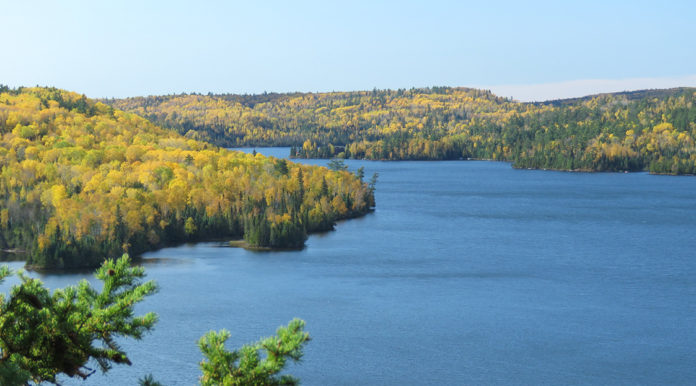WASHINGTON, D.C. – The Biden-Harris administration took action to protect the Boundary Waters Canoe Area Wilderness and surrounding watershed, a spectacular network of rivers, lakes and forests in northeastern Minnesota that comprise the most heavily visited wilderness area in the United States.
Responding to concerns regarding the potential impacts of mining on the area’s watershed, fish and wildlife, tribal and treaty rights, and robust recreation economy, Secretary of the Interior Deb Haaland signed Public Land Order 7917, withdrawing approximately 225,504 acres in the Superior National Forest in northeastern Minnesota from disposition under the United States mineral and geothermal leasing laws for a 20-year period, subject to valid existing rights. This action will help protect the Rainy River Watershed, including the Boundary Waters Canoe Area Wilderness and the 1854 Ceded Territory of the Chippewa Bands, from the potential adverse impacts of new mineral and geothermal exploration and development.
“The Department of the Interior takes seriously our obligations to steward public lands and waters on behalf of all Americans,” said Secretary Haaland. “Protecting a place like Boundary Waters is key to supporting the health of the watershed and its surrounding wildlife, upholding our tribal trust and treaty responsibilities, and boosting the local recreation economy. With an eye toward protecting this special place for future generations, I have made this decision using the best-available science and extensive public input.”
“I applaud Secretary Haaland’s decision to protect the long-term health of the Rainy River Watershed, including the irreplaceable Boundary Waters Canoe Area Wilderness,” said Secretary of Agriculture Tom Vilsack. “This landscape is an international resource renowned for its multitude of recreational opportunities and provides millions of visitors with unparalleled wilderness experiences.”
The decision is the culmination of more than a year of evaluation by federal partners and robust public involvement regarding the potential impacts of mining on the important natural and cultural resources of the Rainy River Watershed.
In October 2021, the U.S. Department of Agriculture’s Forest Service submitted a withdrawal application to the Interior Department’s Bureau of Land Management, which manages the subsurface mineral estate under the national forest. Extensive public input was sought on the requested withdrawal, and the Forest Service conducted a science-based environmental assessment to evaluate the potential impacts of prohibiting new mineral and geothermal exploration and development within the Rainy River Watershed for the next 20 years. The analysis and decision were informed by approximately 225,000 comments gathered from two public comment periods, three virtual public meetings and two tribal consultations.
More than 150,000 visitors from around the world every year are drawn to the 1.1 million-acre Boundary Waters, the only lake-land wilderness in the National Wilderness Preservation System. It boasts more than 1,200 miles of canoe routes, 12 hiking trails, and 2,000 designated campsites, and contributes up to $17.4 million annually to the more than $540 million recreation and tourism economies in Cook, Lake and St. Louis counties.
Located adjacent to Voyageurs National Park, Grand Portage National Monument, and Quetico Provincial Park in Ontario, the area contains over 1,100 lakes, interspersed with islands and surrounded by forests that extend nearly 150 miles along the border with Canada. Congress expanded protections for the wilderness area in 1978, when it directed the Forest Service to maintain high water quality and to minimize “to the maximum extent possible” the environmental impacts associated with mineral development.
The public land order withdrawing portions of the Superior National Forest from operation of the mineral and geothermal leasing laws, subject to valid existing rights, is authorized by the Federal Land Policy and Management Act. The Secretary of the Interior has the authority to withdraw this area for a maximum of 20 years, subject to renewal. Only Congress can legislate a permanent withdrawal.

















































